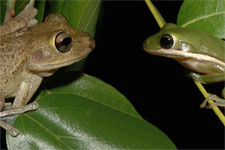Another pasture bites the dust.
Over the past couple years, development where I live in south Lake County has increased dramatically. New subdivisions have appeared on fields where cattle once grazed and Florida scrub jays (our state's only endemic bird) once flourished. Trees have been cut down and land resculpted to accommodate roads and retention ponds and homesites packed so closely together neighbors can practically reach out side windows and touch each other's hands.
A few weeks ago I drove down Grassy Lake Road in Minneola, a quiet back road that I often take to photograph cattle escaping the heat beneath broad oaks, wildflowers growing in the fields and scrub jays standing guard atop scraggly trees.
This time, however, instead of birds or blooms, a herd of cattle or a slow-moving gopher tortoise, I passed a cadre of heavy equipment parked alongside scattered piles of freshly dug dirt. I didn't have to read the sign posted by the trucks to know what was happening.
Another field fell victim to progress.
I understand that land owners have every right to sell their land even if that means cutting down all the trees and reshaping the contours to meet the needs of developments. I understand that people need places to live and the allure of a newly built house. But just because I understand these things doesn't mean I have to like them.
It makes me sad to see so many parcels of open land - especially land where threatened animals like the Florida scrub jays and gopher tortoises live - be destroyed for wildlife habitat in order to accommodate the needs of people.
We humans call it progress. But what would the dwindling population of scrub jays and other animals say about the depletion of land on which they can live? Progress for some is not progress for all. For those of us who care, it's just upsetting.


.JPG)



.JPG)
.JPG)
.JPG)
.JPG)






.JPG)

.JPG)
.JPG)
.JPG)
.JPG)